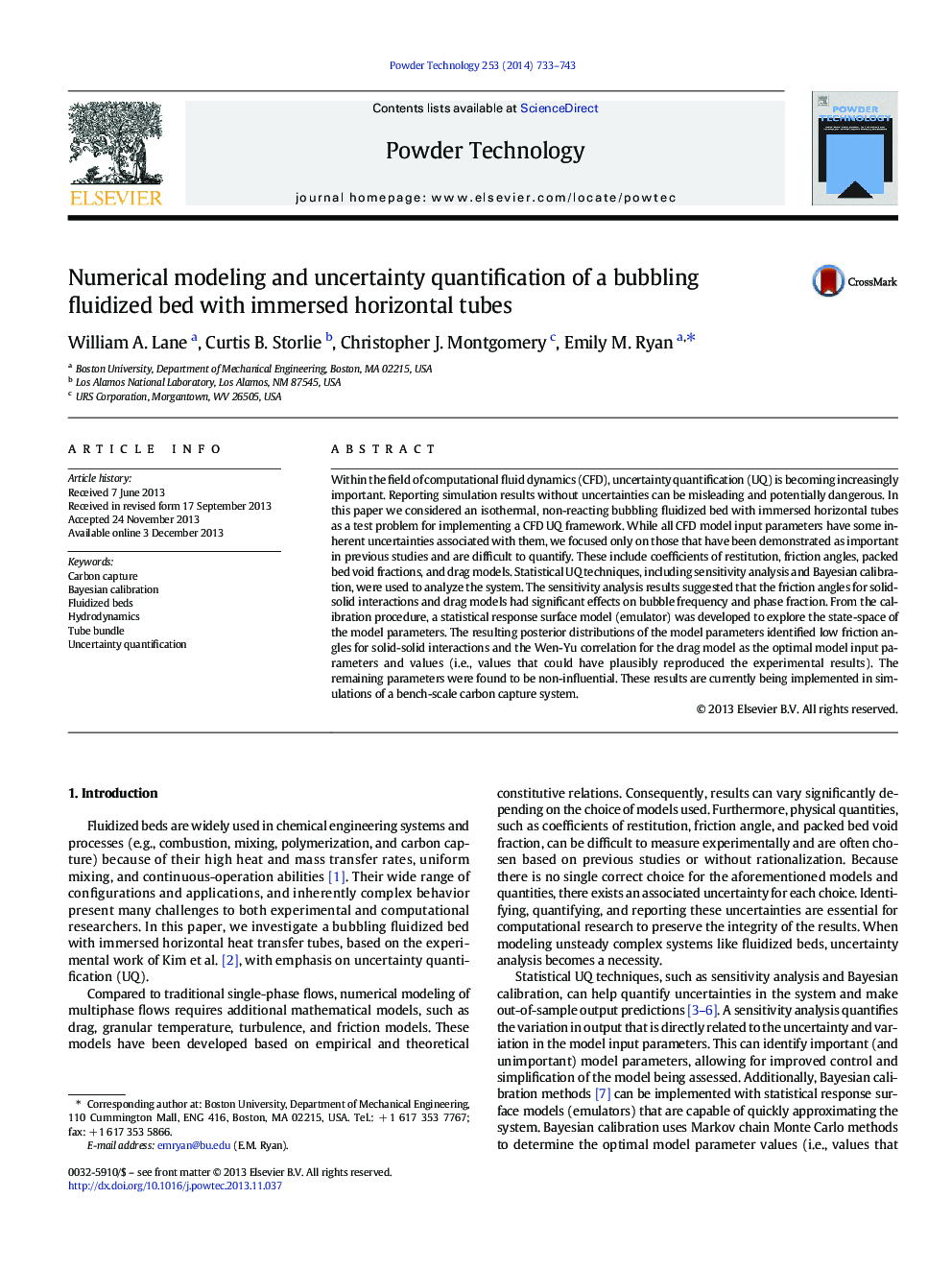| کد مقاله | کد نشریه | سال انتشار | مقاله انگلیسی | نسخه تمام متن |
|---|---|---|---|---|
| 236516 | 465672 | 2014 | 11 صفحه PDF | دانلود رایگان |
• A bubbling fluidized bed with immersed horizontal tubes was simulated using MFIX.
• Latin hypercube sampling was used to design 90 test simulations.
• Sensitivity analyses associated significant output variation with two parameters.
• Posterior distributions favored a low friction angle and the Wen-Yu drag model.
• Bayesian calibration produced an emulator capable of predicting hydrodynamics.
Within the field of computational fluid dynamics (CFD), uncertainty quantification (UQ) is becoming increasingly important. Reporting simulation results without uncertainties can be misleading and potentially dangerous. In this paper we considered an isothermal, non-reacting bubbling fluidized bed with immersed horizontal tubes as a test problem for implementing a CFD UQ framework. While all CFD model input parameters have some inherent uncertainties associated with them, we focused only on those that have been demonstrated as important in previous studies and are difficult to quantify. These include coefficients of restitution, friction angles, packed bed void fractions, and drag models. Statistical UQ techniques, including sensitivity analysis and Bayesian calibration, were used to analyze the system. The sensitivity analysis results suggested that the friction angles for solid-solid interactions and drag models had significant effects on bubble frequency and phase fraction. From the calibration procedure, a statistical response surface model (emulator) was developed to explore the state-space of the model parameters. The resulting posterior distributions of the model parameters identified low friction angles for solid-solid interactions and the Wen-Yu correlation for the drag model as the optimal model input parameters and values (i.e., values that could have plausibly reproduced the experimental results). The remaining parameters were found to be non-influential. These results are currently being implemented in simulations of a bench-scale carbon capture system.
Figure optionsDownload as PowerPoint slide
Journal: Powder Technology - Volume 253, February 2014, Pages 733–743
